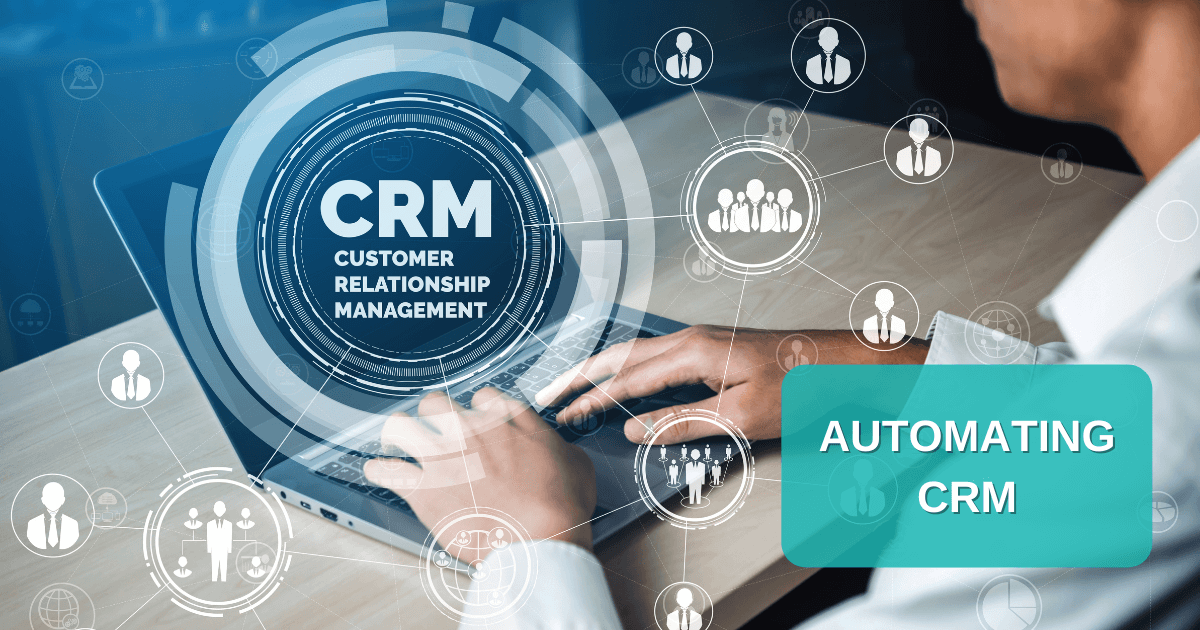8 Business Workflows to Automate for Time Savings & Growth
by

Running a small business today means juggling a lot: customers, sales, operations, marketing, and maybe even a bit of IT. Most days, it feels like there is always one more task waiting on your list. The good news? Workflow automation is no longer reserved for big companies with big budgets. It is here, it is accessible, and it can transform the way your team works day to day.
At Pulse CRM, we have seen what happens when small businesses embrace automation. They reclaim hours every week, reduce stress, and rediscover the joy of focusing on what truly matters, customers and growth. In this guide, we explore eight powerful workflows you can automate right now. You will see real stories, learn what works, and understand how automation can bring calm, confidence, and control back into your business.
Why Automate Business Workflows?
If you are constantly feeling like you are playing catch-up, you are not alone. Most business owners do not struggle because they lack drive; they struggle because they are buried in repetitive, low-value work. Every time you copy data between tools or chase a late response, that is time lost forever.
Automation changes that. It acts like a digital assistant that never sleeps, sending follow-up emails, updating your customer relationship management (CRM) system, and keeping your team in sync. According to Pulse data, small businesses using automation save 10+ hours a week and improve response speed by 25%. That is the difference between feeling overwhelmed and feeling in control.
One construction company told us that automation gave them their weekends back. They stopped spending Sundays cleaning up quotes and emails and started spending them with their families. That is what automation really delivers: time, peace of mind, and the freedom to think bigger.
Now that you understand the why behind automation, let’s move into the how, starting with one of the most powerful and rewarding automations you can set up, capturing and managing leads.
1. Lead Capture Workflow Automation
Picture this: it is 7 p.m. on a Friday, and someone fills out your contact form. Do they get an instant response, or do they wait until Monday morning? For many small businesses, that delay can mean a lost lead.
With Pulse CRM, every form submission instantly creates a new contact record, assigns it to the right person, and sends a welcome message. It is like having a 24/7 team member who never misses a beat.
One landscaping company used to lose weekend leads because they did not check messages after hours. After automating, every new inquiry triggered a personalized text. Within two months, their weekend conversions jumped 19%.
When your leads feel seen, they trust you faster, and trust builds relationships. That is the quiet power of automation. It shows customers you care before you ever speak to them.
Once you have mastered lead capture, the next step is to keep that momentum going by giving every new client a smooth, personalized onboarding experience.
2. Customer Onboarding Automation
Remember the last time you bought a service and immediately got a confusing or delayed welcome email? It is a small detail that can leave a lasting impression. Onboarding sets the tone for everything that follows.
With Pulse, you can design an onboarding flow that feels personal and polished. A new client can get a warm welcome email, be added to a Project Management board, and even a quick introduction video, all sent automatically. Your client feels guided, and your team feels organized.
A business coach we worked with used to send every onboarding email manually. Once they automated the process, customer satisfaction scores rose 30%. Clients said the experience felt more consistent and professional. It is proof that automation can add a human touch, not take it away.
With onboarding handled, let’s look at another area where small businesses lose hours every week: finding and hiring the right people.

3. Hiring Workflow Automation
Hiring the right people should feel exciting, not exhausting. But for many small businesses, reviewing resumes and scheduling interviews quickly turns chaotic.
Pulse automates this process from start to finish, from application submission to interview scheduling. Imagine getting an alert when a qualified candidate applies, and automatically sending them a thank-you message. It saves time and keeps communication professional.
One cleaning company owner told us, “I used to dread hiring season. Now I actually look forward to it.” Their applications go straight into the system, where automations sort and tag candidates. In days instead of weeks, they go from posting a job to welcoming a new hire. Check out our post on Automating Hiring Processes to Save Time and Money to learn how it works.
Once your team is growing, you will want to ensure they are equipped to close deals faster. That is where automated quoting comes in.
4. Quoting Workflow Automation
If you have ever lost a deal because a quote took too long, you know the pain. Customers today expect quick, accurate responses. That is where automation steps in.
With Pulse, you can generate quotes in minutes, pulling customer data directly from your CRM, applying discounts automatically, and even tracking whether the quote was opened. You can route approvals and follow-ups without lifting a finger.
One accounting firm used Pulse to shorten its quoting process from three days to three hours. Another construction supplier told us, “Now, when a client calls, we can send a quote before they hang up.” Visit our Quoting Features page to see how easy it is to bring speed and confidence to your sales process.
Now that quotes are streamlined, the next natural step is to optimize how deals progress with sales pipeline automation that keeps your team moving in sync.
Let Us Help You Get Started!
Pulse CRM delivers more than software. We’re your partner in success.
We fully set up your CRM, including importing your data, configuring sales and marketing automations, designing branded email templates, writing engaging email copy, setting up sales pipelines, and much more.
5. Sales Pipeline Automation
Keeping track of deals should not feel like detective work. Yet, for many teams, leads get lost between spreadsheets and emails. Automation fixes that by connecting every step of your pipeline.
When a deal moves to negotiation, Pulse can automatically send a reminder to follow up, assign a task, or notify your manager. The result is a clean, organized system where no opportunity falls through the cracks.
A SaaS startup using Pulse saw a 40% boost in deal follow-through after automating its pipeline. Their founder said, “We finally stopped guessing what’s next, the system tells us.” Learn more about Sales Pipeline Management best practices and how to make your pipeline run itself.
Once your pipeline is flowing smoothly, it is time to ensure your data keeps up. That is where CRM and follow-up automation become essential.

6. CRM Data & Follow-Up Automation
You cannot make good decisions with bad data. But keeping your CRM clean is tough when updates rely on memory. Automation ensures your data is always fresh, allowing your team to focus on relationships, not admin work.
Pulse keeps your CRM up to date automatically, tagging engaged contacts, logging calls, updating stages, and even generating summary reports. For one financial firm, this saved four hours a week and gave leadership confidence in every report. They said, “It feels like our data finally works for us.”
With accurate data fueling your business, your marketing becomes much more effective. Let’s explore how automation can give your outreach the rhythm and consistency it deserves.
Pro Tip: Use CRM automation to trigger cross-sell offers. For example, after a purchase, a system can automatically generate a personalized upsell message.
7. Marketing Workflow Automation
Marketing is often a mix of creativity and chaos. There are emails to send, posts to schedule, and leads to nurture, often on repeat. Pulse makes it simple to create marketing automations that feel human, not robotic.
Picture this: someone downloads your guide, and within minutes, they get a welcome email tailored to their interests. Over the next two weeks, they will receive valuable tips and a personal note from your team. Every interaction builds trust.
A digital agency using Pulse saved $400 a month by consolidating tools and saw engagement rise 35%. “It is like our marketing suddenly had rhythm,” they told us.
Strong marketing naturally leads to more customer interactions, indicating it is time to strengthen how you handle support and service.
8. Customer Service Automation
Nothing builds loyalty like great service. But if your inbox is overflowing, it is hard to stay on top of everything. Customer service automation helps your team respond faster, track requests, and keep clients feeling supported.
When someone submits a form, Pulse assigns it to the right agent, sends a confirmation, and follows up automatically. If an issue is not resolved, it is escalated, no more missed messages or forgotten customers.
Discover more on our Lead Capture Automation page and see how to deliver care that scales.
Once customer service runs smoothly, the next step is to bring all your automations together, building a system that runs seamlessly from first touch to renewal.

Getting Started with Workflow Automation
The first step is the hardest, but it does not have to be complicated. Start with one workflow that eats the most time, like lead capture or follow-ups, and build from there. Each success builds confidence.
Here’s your roadmap:
- Map your processes. Write down the steps you take for common tasks.
- Find friction points. Look for places where things slow down or go wrong.
- Automate the essentials like sending reminders, updating records, and closing gaps.
- Refine as you go. The best automations evolve over time.
Automation is not about replacing people; it is about freeing them. Teams that embrace it report less stress, better focus, and more meaningful work. Read more in Small Business Automation Strategies.
Now, let’s talk about how Pulse makes all of this simpler, no tech headaches required.
How Pulse Makes It Easy
We understand that automation can feel intimidating. That is why Pulse was built to make it simple. Everything you need from CRM, marketing, quoting, pipelines, and reporting lives under one roof. No tech headaches, no upsells.
Our team helps you design workflows, connect tools, and bring your system to life. It is more than software; it is a partnership. As one client told us, “Pulse did not just save us time; it gave us back control.”
When your systems work seamlessly, your team feels lighter, faster, and more confident. That is what we help build every day.
Let Us Help You Get Started!
Pulse CRM delivers more than software. We’re your partner in success.
We fully set up your CRM, including importing your data, configuring sales and marketing automations, designing branded email templates, writing engaging email copy, setting up sales pipelines, and much more.
Final Thoughts
Automation is not about doing less; it is about doing better. It gives small businesses the power to run smoothly, stay consistent, and scale without losing their human touch.
At Pulse, we have seen what happens when teams automate thoughtfully. Customers stay longer, employees feel supported, and leaders find space to think strategically again.
Ready to experience it for yourself? Book a 30-minute demo and see how Pulse helps small businesses save time, simplify workflows, and grow with confidence.
Pro Tip: 9 Automations Every Small Business Should Implement
FAQs
Start with repetitive, time-consuming tasks like lead capture or quoting. These quick wins build momentum and give your team visible relief. One client automated their follow-up process and saved five hours in the first week, which was enough to convince them that automation was worth it.
Not when done thoughtfully. Automation helps you stay consistent while keeping communication warm and timely. A small gym, for instance, uses it to send personalized texts when members miss a week, a small gesture that keeps people connected.
No. Platforms like Pulse are built for real business owners, not IT experts. Think of it as setting up simple cause-and-effect rules: when X happens, do Y. Once you see it work once, you will realize it is easier and more empowering than you imagined.
Most small businesses save 8 to 15 hours per week after automating key processes. Those hours can be spent calling leads, meeting clients, or ending the workday on time. One firm cut its quoting delays by two days, finally having time to focus on strategy again.
Automation should evolve with your business. You can edit triggers, update messages, and refine workflows in minutes. Businesses that review automations quarterly stay sharp, efficient, and in tune with their customers.



